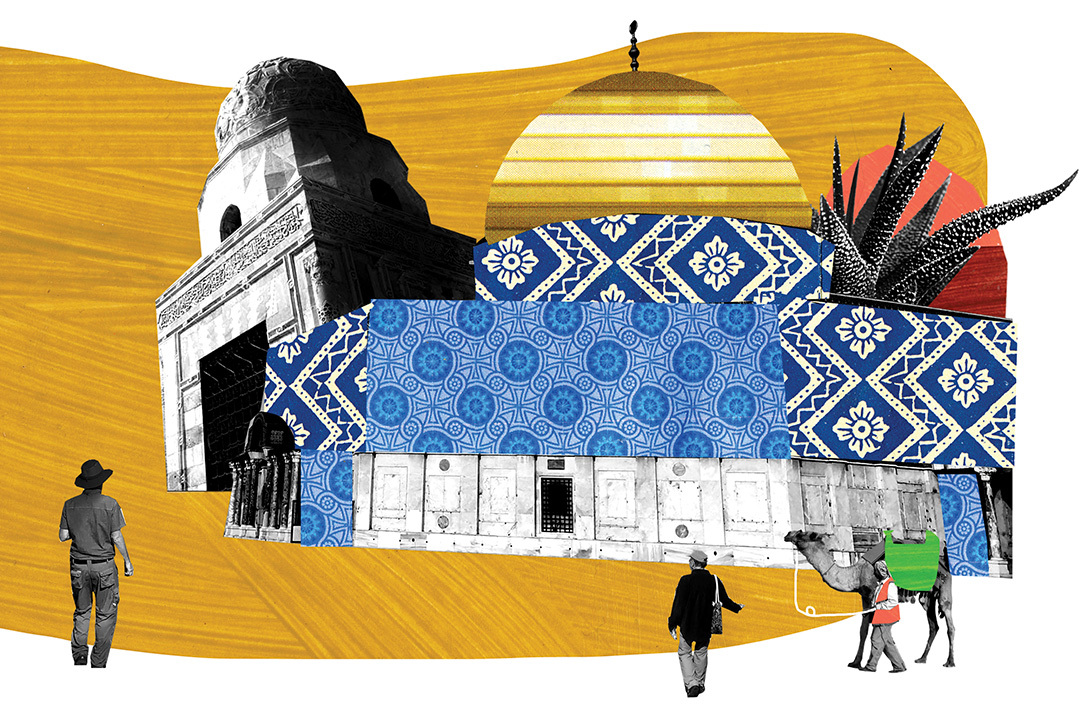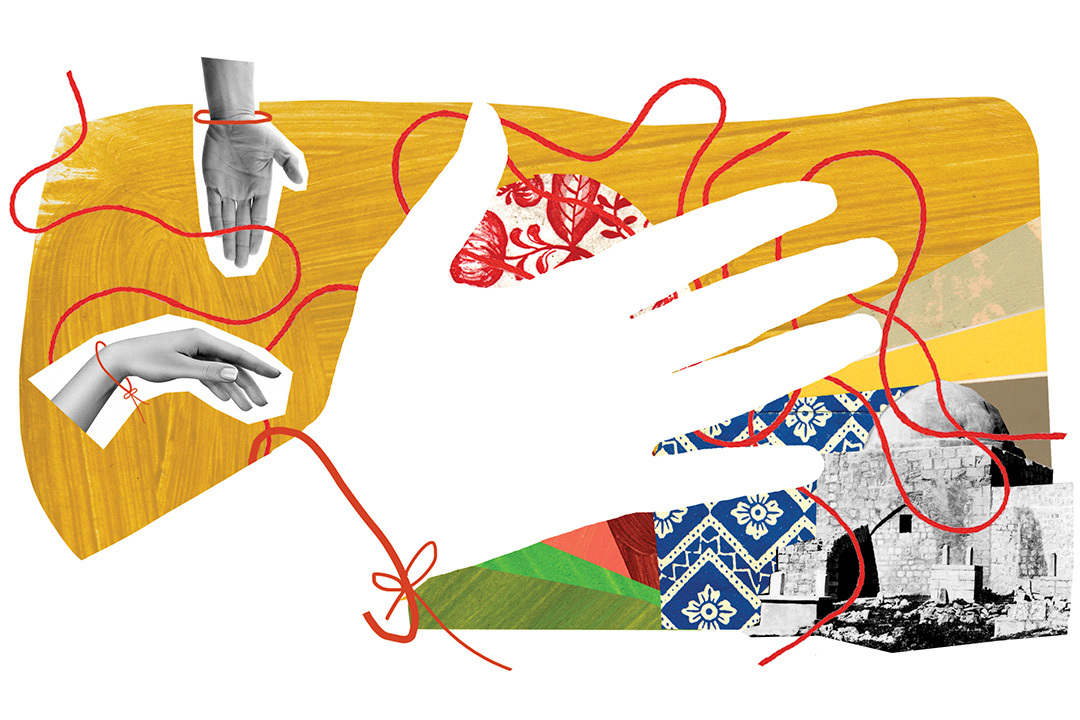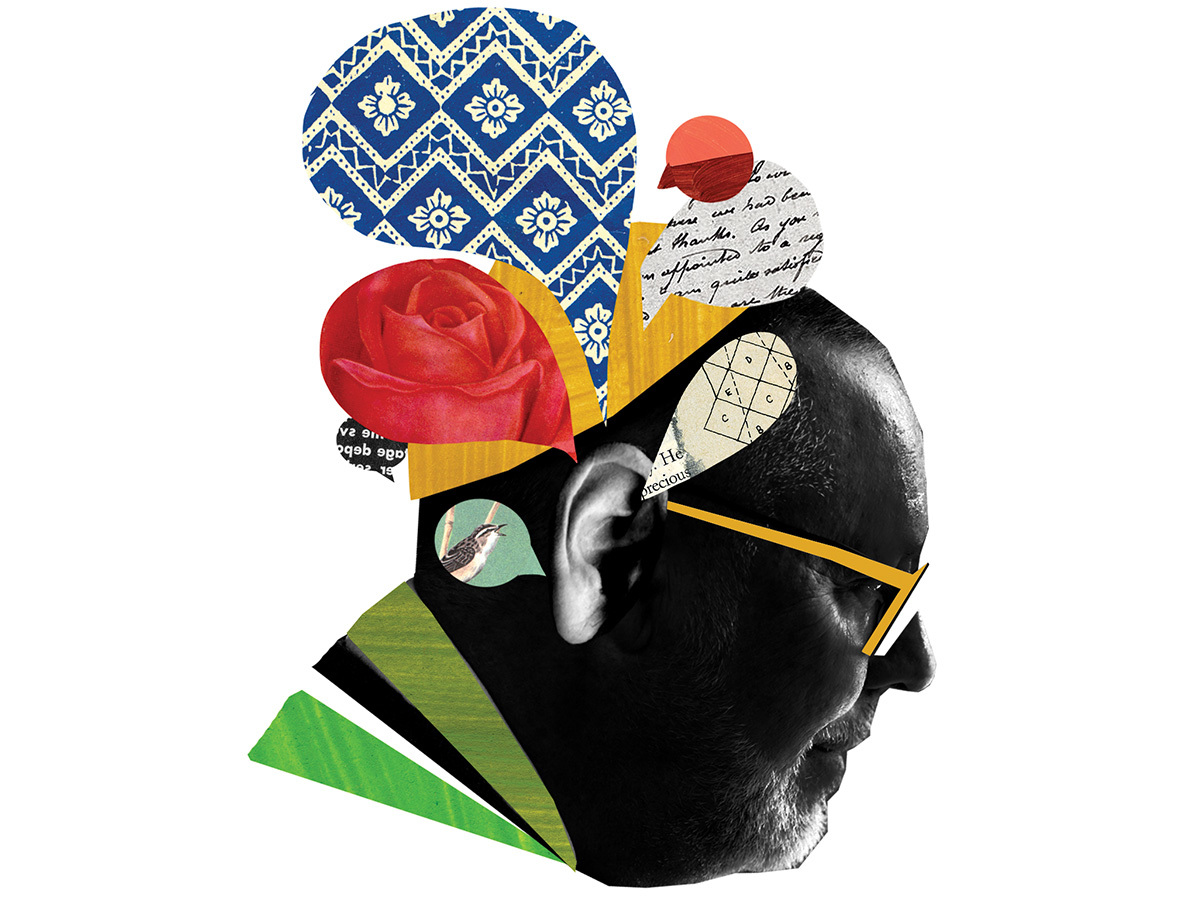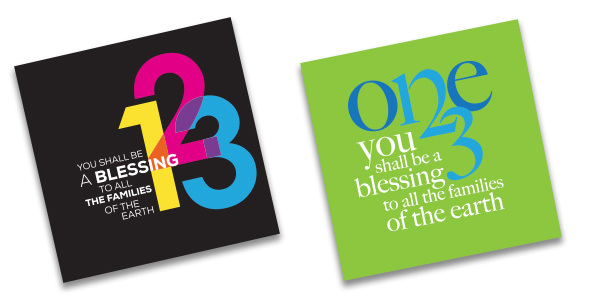Roadside Assistance in the Holy Land
Art by Andrea D’Aquino
We asked Rami Shapiro to journey with 30 fellow seekers to this ancient flashpoint of world religions. Our question for the Rabbi was: “What does mature spirituality look like?”
Grammar aside, “spirituality” is a verb: a progressive stripping away of the conditioning that blinds you to the truest fact of your existence: you are a happening of God, YHVH (Exodus 3:15, from the Hebrew verb “to be”), the Happening happening as all happening. You are God the way a wave is the ocean. Because spirituality is progressive, I prefer to speak of a maturing rather than a mature spirituality. Spirituality isn’t fixed but fluid, not a final “aha” but a recurring “wow.” In the Hebrew Bible this maturing spirituality is called Lech Lecha:
YHVH said to Abram and Sarai, “Lech lecha: take leave of your country, your clan, and your parents to journey to the land I will show you. . . .” (Genesis 12:1)
Lech lecha literally means “walk (lech) to yourself (lecha)”—suggesting that this seemingly outer journey is in fact an inner one. The early rabbis agree and noted that if this were an outer journey you would first leave your parents, then your clan, and lastly your country rather than the other way around. The order Torah uses is based not on geography but psychology: It is easier to free yourself from the conditioning of nationality than of culture and ethnicity, and easier to free yourself from the conditioning of culture and ethnicity than biology and parental bias. The purpose of Lech Lecha, journeying to the Self that knows it and all is God, is to be “a blessing to all the families of the earth.” (Genesis 12:3) It was with this maturing spirituality in mind that we made our journey to the “Holy Land.”

I’m a panentheist. For me, God doesn’t choose, save, damn, write books, or dabble in real estate. For me, God is YHVH, the Happening happening as all happening “in whom we live and move and have our being” (Acts 17:28).
I don’t pray to God but engage in practices designed to awaken me in, with, and as God. Still, there are moments when prayer spontaneously arises. These are moments author Anne Lamott calls Help, Thanks, Wow: moments of heart shattering, heart healing, and ecstasy.
While visiting Haram esh-Sharif, the ancient site of the Jewish Temple and the current site of the Dome of the Rock, from which Muhammad ascended to heaven, one of us felt such a moment. All she wanted was to touch the mosque as she saw Muslims doing, and offer a silent prayer for peace. As she did so, however, she was confronted by the Muslim authorities—who, if not for the negotiating skills of our guide, Sufian Abuhanna, would have ejected all of us from this profoundly moving place.
It wasn’t that these guardians of the sacred were opposed to peace or prayer. It was that they were conditioned by a notion of religious purity and exclusivity that restricted both peace and prayer to the true believer and defined as “defiling” the prayer of any who believed differently. This is not unique to Islam; it is the norm among those whose religion and God are tribal and zero-sum: pitting people against people in an endless argument over whom God loves best. One can only have compassion for those trapped in such a narrow understanding of faith.
Noise Canceling
I affirm that Jesus was fully human and fully divine. I affirm this not as a Christian but as a panentheist who sees all people as fully human and fully divine. Because I know this to be so, I had hopes that our visit to the Garden Tomb of Joseph of Arimathea, where the crucified Jesus was buried, would, as it did for me years ago, awaken others to the seamlessness of divine-human manifesting.
The Garden Tomb is run by the Anglican Church, and only their guides can take people through it. While Sufian waited for us by the exit, our Anglican guide introduced himself by letting us know that Catholicism, the religion of his birth, was a false religion, and only Anglicanism was true. Speaking to any among us who might wish to convert to the true religion, he said, “I can help you with that.” He then warned us that he might be interrupted by the Muslim adhan, the call to prayer coming from nearby mosques, and suggested we drown out “that noise” by singing Christian hymns. At that point I interrupted him, explaining that some of us were Catholics and others Jews, and that none of us considered the Muslim adhan “noise” but rather a sublime summons to remember our true nature as part of the infinite One manifesting as all reality. “Well, it isn’t that to me,” he said. When I replied, “I can help you with that,” he chose not to take the bait and led us through the garden to the tomb instead.
Not wanting to let my ego sour anyone’s experience at the Garden Tomb, I retreated to a quiet spot to meditate. As our host had predicted, the adhan sounded from the surrounding mosques. Rather than close my ears to this call to prayer, I sank into a quiet reverie, softly chanting la ilaha illallah: there is nothing but Allah, nothing but God, nothing but the infinite Happening happening as all happening. I was startled out of my trance by another Anglican guide.
“Are you the rabbi?” she asked.
“Yes,” I said, feeling very vulnerable.
“When it comes to Jesus’ claim that he and the Father are one,” she said, “there are only three choices: he’s either a liar, a lunatic, or Lord. Which do you believe?”
This is called Lewis’s trilemma, after the author C. S. Lewis, who popularized it as a foolproof evangelizing tool: After all, who would say Jesus was a liar or a lunatic? The trilemma must have been part of the official script of Garden Tomb guides, since I heard the same thing from our host earlier.
“I reject the premise of your question,” I replied. “There is a fourth option.”
“Really,” she said without sarcasm. “What might that be?”
“The fourth option is that Jesus was a Jewish mystic who came to know what all mystics know, namely that all things are a part of God and nothing is apart from God. When Jesus said, ‘I and the Father are one,’ he knew what the Hindu Chandogya Upanishad knows when it says, ‘Tat tvam asi, you are That,’ and what the Jewish mystic Abraham Abulafia knew when he said, ‘Behold, I am God and God is me,’ and what the Sufi mystic Mansur Al-Hallaj knew when he said, ‘I am Truth,’ and what the Christian mystic Meister Eckhart knew when he said, ‘The eye through which I see God is the same eye through which God sees me; my eye and God’s eye are one eye, one seeing, one knowing, one love.’”
We were silent for a moment. Then she walked away, calling over her shoulder, “Thanks, I never thought of it this way before.” I smiled, waved, and inwardly hoped she would think of it again and again and over and over again until she knows that what is true of Jesus is true of her as well: She and God are one.

Rachel’s Tomb and the Red Thread
According to Jewish tradition, the Matriarch Rachel died giving birth to Benjamin and is buried close to Bethlehem. “Jacob set up a pillar upon her grave; that is the pillar of Rachel’s grave to this day.” (Genesis 35:20) Since “this day” was thousands of years ago, the actual tomb of Rachel is unknown, but the Rachel’s Tomb we visited is an active site of Jewish pilgrimage and prayer. Unlike the hyper-sensitivity we experienced at Haram esh-Sharif, or the pious bigotry displayed at the Garden Tomb, the Orthodox Jews at Rachel’s Tomb ignored us. It’s not that we were welcomed, or that Jews are more open-minded than Muslims or Christians, but that we were invisible to them. As long as we didn’t violate the holiness of the site by having women and men pray together, we didn’t exist.
The reason for our visit was to participate in the ritual of the red thread. Traditionally, a large ball of red string is wrapped around Rachel’s Tomb seven times, and women visiting the tomb to ask Rachel to help them become pregnant wear a length of this string around their wrists as a fertility amulet. Our own version was a bit different.
First, we brought red string with us from the U.S. Second, rather than wrap our string around the tomb, one of our fellow travelers, Susan Gilbert, took our ball of string with her into the women’s section of the shrine and touched it to the tomb. Third, instead of asking for children we committed ourselves to justice, compassion, and humility, using Micah 6:8 as our touchstone: “You know what YHVH requires: Do justly, love mercy, and walk humbly with your God.”
The ancient rabbis asked why Micah said, “your God” rather than simply “God,” and concluded that this was to remind us that our ideas about God are not to be mistaken for the reality that is God. Walking humbly with your God means freeing yourself from the conditioning of religious absolutism.
We each received a piece of string and carefully tied three knots in it, silently committing ourselves to live lives of justice, compassion, and spiritual humility, respectively. Having made these commitments to ourselves, we then turned to another and asked that she or he witness our commitment by tying the string around our wrists. I knew the ritual rang true for people because we did it without chatting, and not a few eyes were wet with tears when we finished.
We then turned to another and asked that she or he witness our commitment by tying the string around our wrists.
Mother Mary Comes to Me
I’m a Jew whose daily practice includes Hebrew and Sanskrit mantra, silent meditation, and adoration of the Mother in all her forms: Mary Theotokos, the Mother of God among them. Whenever I visit a place devoted to Mary, I make time to honor her by repeating the standard “Hail Mary”:
Hail Mary full of grace, the Lord is with thee.
Blessed art thou among all women, and
blessed is the fruit of thy womb, Jesus.
Holy Mary, Mother of God,
pray for us sinners now and at the hour of our death. Amen.
For some reason I tend to do this with a slightly British accent. Something to do with King James, I suspect.
During our stay in Nazareth, a town dedicated to Mary, we visited “The Spring of the Virgin Mary,” where, according to Luke, the archangel Gabriel appeared to Mary and explained that she would give birth to Jesus. This was my first visit to Nazareth, and I found the energy at the well palpable. Making time to be alone with Mary at the well and using a weathered icon of the Mother of God attached to the stone structure protecting the well, I began my Hail Mary mantra. As soon as I finished the first recitation, I heard a woman’s voice in my head say, “Thank you, but it is time these words change. Please, whenever you honor me in this way, use these words instead:
Hail Mother full of grace, the Divine is you.
Blessed are you and all women, and
blessed is the fruit of your womb—all beings.
Holy Mother, fount of Wisdom,
guide us seekers now and into the moment of our death. Amen.”
I kept this to myself, not intending to share it at all, but I felt compelled to do so when, after dinner at a nearby restaurant, a group of us gathered at the well to walk back to our hotel. I asked the group if they would like to hear what I heard from Mary hours earlier. Their response was an enthusiastic yes, and I shared with them the Hail Mary I had received. We repeated it together in call-and-response style as we gazed upon the face of the Mother of God. I could feel the group resonating with her words and was humbled by those who spoke to me privately about how moved they were by what we recited.
A Jewish boy embraced by Mary and teaching the gentiles? A bit too “on the nose,” I know.

This was my first visit to Nazareth, and I found the energy at the well palpable.
12:3
A maturing spirituality is active in the world. Knowing the unity of self and other in and as the Happening that is God precludes spiritual narcissism. Or, to put it differently, a maturing spirituality of Self precludes a selfish spirituality of ego or tribe. This is where the great commission of Genesis 12:3 comes in: “Be a blessing to all the families of the earth.” All the families: human and otherwise. This is the active maturing spirituality I strive to embody, and the one with which I wanted to bring our journey to a close. So, after our last supper in Jerusalem, I handed everyone a special 123 button and explanation card that my colleague Frank Levy and I created, and we talked about the three steps to being a blessing:
1. Be Present and see self and others as waves of the infinite divine ocean;
2. Be Free and drop the conditioning that blinds self to Self; and
3. Be Compassionate and treat all beings with kindness and respect.

123 Button - oneriverfoundation.org
The Hope
Israel’s national anthem is HaTikvah, “The Hope,” based on an 1877 poem by Naftali Herz Imber. It speaks of the Jews’ millennia-old hope of returning to our ancient homeland. The Jews’ hope is, sadly but inevitably, the Palestinians’ Nakba, catastrophe. While I do my best to remain hopeful for both Israelis and Palestinians, my greater hope is that each of us returns to our true nature as God and lives the ethic of godliness this return engenders, and in this way can be a blessing to all the families of the earth. This is the maturing spirituality that calls to me, and one I hope calls to you as well.


